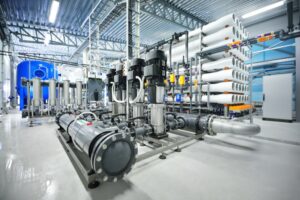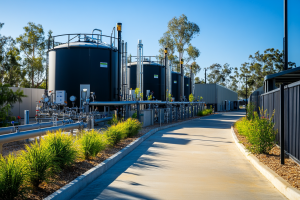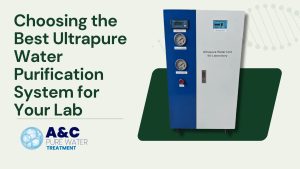Ion exchange resins are versatile materials used in various chemical and industrial processes. They possess several important properties:
- Ion Selectivity: Ion exchange resins have a specific affinity for certain ions. They can preferentially adsorb or exchange ions based on their charge and size.
- Chemical Structure: They are typically cross-linked, insoluble polymers. The polymer matrix is often made of styrene and divinylbenzene, but other materials can also be used.
- Functional Groups: Ion exchange resins contain functional groups that are responsible for the ion exchange process. These groups can be negatively charged (anionic resins) or positively charged (cationic resins).
- Capacity: This refers to the amount of ions that a resin can exchange. It’s usually expressed in terms of milliequivalents (meq) per gram of resin.
- Particle Size and Shape: Resins come in various particle sizes and shapes. Finer particles have a larger surface area and can provide higher exchange capacities, but they may also lead to higher pressure drops in a column.
- Stability: Resins should be stable under the operating conditions they’re subjected to, including temperature, pH, and chemical environment. This ensures that they maintain their ion exchange properties over time.
- Regenerability: Ion exchange resins can often be regenerated by washing them with a solution that displaces the adsorbed ions. This allows the resin to be reused multiple times.
- Physical Strength: Resins should have adequate physical strength to withstand the pressures and forces exerted during their use in columns or other applications.
- Porosity: This can affect the kinetics of ion exchange. A higher degree of porosity can allow for faster exchange rates.
- Swelling Characteristics: When exposed to a liquid, ion exchange resins may swell. This property is important to consider in the design of ion exchange systems.
- Operating Conditions: Resins may have specific requirements for pH, temperature, and pressure. It’s important to operate them within the recommended ranges to ensure optimal performance and longevity.
- Compatibility: Resins should be compatible with the chemicals and solvents they will come into contact with during their intended application.
- Toxicity and Environmental Impact: It’s important to consider the environmental impact of using ion exchange resins, especially if they are used in applications where they may come into contact with food or drinking water.
- Cost: The cost of the resin is a practical consideration, especially for large-scale industrial applications.
Understanding these properties is crucial for selecting the right ion exchange resin for a particular application, as different resins will perform differently under various conditions.
Contact No. 0415 725 920
Email:
ancpurewater@gmail.com
ancpurewater@outlook.com
Address: 2 Murndal Court, Berwick VIC, 3806






